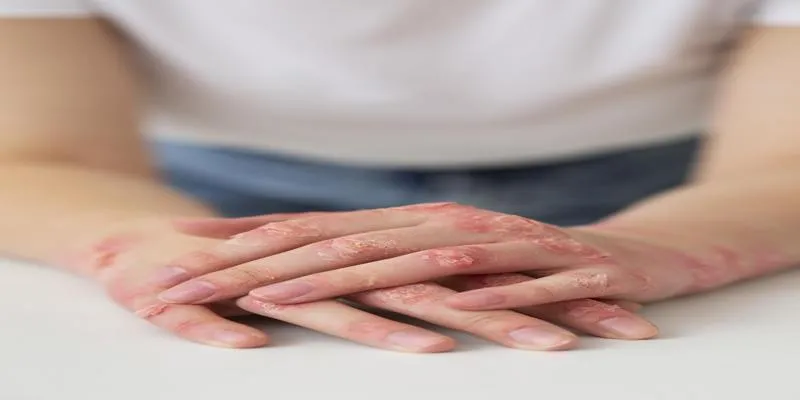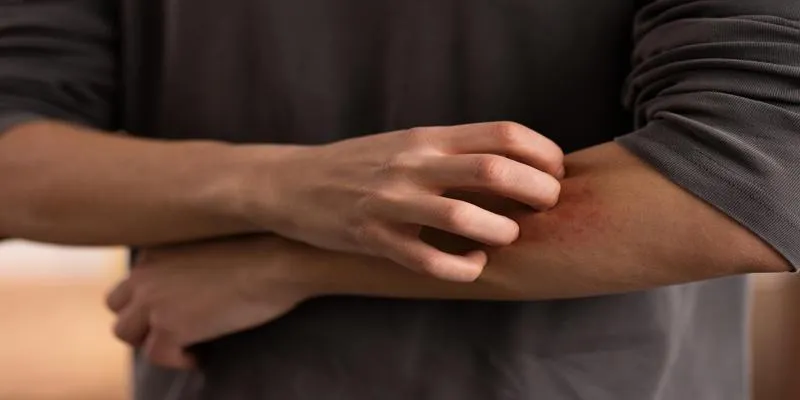What is Xerotic Eczema
Have you noticed your skin becoming dry, itchy, and irritated during the colder months? You might be experiencing xerotic eczema, a condition affecting millions globally. Often referred to as asteatotic eczema or “winter itch,” this type of eczema occurs when the skin loses its moisture, leading to extreme dryness. In this article, we’ll explore the causes, symptoms, and treatments for xerotic eczema, empowering you to take control of your skin health and find relief from this uncomfortable condition.
What is Xerotic Eczema?

Xerotic eczema, also known as winter itch or asteatotic eczema, is a skin condition characterized by dry, itchy, and cracked skin. It commonly occurs during the cold winter months when the air is dry. Understanding “What is Xerotic Eczema?” is crucial for raising awareness and effectively managing this skin condition.
Causes and Risk Factors
Xerotic eczema typically results from skin moisture loss. Several factors can trigger this condition, including:
- Age: Older adults are more at risk due to decreased skin oil secretion.
- Climate: Cold, dry weather exacerbates symptoms.
- Frequent Bathing: Using strong soaps can deplete the skin’s natural oils.
- Underlying Health Conditions: Thyroid disorders and malnutrition can predispose individuals to this condition.
Symptoms and Diagnosis
Recognizing the signs of xerotic eczema is vital for timely diagnosis and treatment. Common symptoms include:
- Dry, rough, and scaly skin
- Severe itching, often worsening at night
- Tiny cuts or fissures in the skin
- Redness and inflammation
Signs and Symptoms of Xerotic Eczema
Xerotic eczema presents several noticeable symptoms that vary in severity. Identifying these signs is crucial for effective diagnosis and treatment.
Dry, Itchy Skin
The primary indicator of xerotic eczema is dehydrated skin. You may observe:
- Rough, scaly patches
- Intense itching, particularly at night
- Redness and inflammation
Cracks and Fissures
- Fine lines or cracks
- Deeper fissures that may bleed
- A leathery or lizard-like appearance
Associated Symptoms
Xerotic eczema can impact more than just the skin, causing:
- Painful burning or stinging
- Increased sensitivity to soaps, detergents, and lotions
- Sleep disturbances due to itching
Causes and Risk Factors for Developing Xerotic Eczema

Environmental Factors
Xerotic eczema is often triggered by environmental factors. Excessive hand washing and using harsh soaps can disrupt the skin’s protective layer, increasing vulnerability to this condition.
Age and Genetics
As we age, our skin produces less oil, making us more susceptible to xerotic eczema. Genetics can also play a role, especially if there is a family history of eczema or other skin conditions.
Medical Conditions
Certain medical conditions, such as thyroid disorders, diabetes, and nutritional deficiencies, can lead to dry skin and eczema flare-ups. Medications that affect the skin’s oil production or cause water loss can also contribute to xerotic eczema.
Lifestyle Factors
Daily habits significantly impact skin health. Frequent washing with hot water and inadequate intake of essential fatty acids can lead to skin dryness, potentially triggering xerotic eczema.
Treatments and Home Remedies for Xerotic Eczema
Effective treatment of xerotic eczema involves a combination of topical treatments and lifestyle modifications. Understanding this common skin issue can guide you toward appropriate management strategies.
Topical Treatments
Emollients are crucial for treating xerotic eczema. Apply fragrance-free, hypoallergenic emollients after showering to lock in moisture. For resistant cases, dermatologists may prescribe topical corticosteroids or calcineurin inhibitors to reduce inflammation and itching.
Lifestyle Modifications
Adopting certain lifestyle changes can significantly improve symptoms:
- Avoid hot water baths and limit showers to 10 minutes.
- Use mild, non-soap cleansers.
- Gently pat skin dry instead of rubbing.
- Wear soft, breathable fabrics like cotton.
- Use a humidifier to maintain indoor humidity.
Dietary Considerations
While the diet’s role in xerotic eczema is not fully understood, some people find relief by:
- Increasing omega-3 fatty acids intake from fish, flaxseed, or walnuts.
- Staying well-hydrated by drinking plenty of water.
- Avoiding trigger foods like gluten and dairy products.
Lifestyle Changes and Prevention of Xerotic Eczema Flare-Ups
Preventing xerotic eczema involves more than symptomatic treatment. Implementing specific lifestyle changes can reduce flare-ups and promote healthy skin. Learn “What is Xerotic Eczema?” to take preventive measures effectively.
Moisturize Regularly
Hydration is key to managing xerotic eczema. Apply fragrance-free, hypoallergenic moisturizers after bathing while your skin is still damp to lock in moisture. Look for moisturizers containing ceramides or hyaluronic acid to maintain the skin barrier.
Adjust Your Bathing Routine
Use warm water for baths, limiting them to 5-10 minutes. Hot water strips the skin of its natural oils, leading to dryness. After bathing, gently pat your skin dry with a soft towel.
Humidify Your Environment
Dry air can worsen xerotic eczema symptoms. Use a humidifier indoors, especially during winter or summer when indoor heating or cooling reduces humidity. This simple step helps your skin retain moisture.
Choose Skin-Friendly Fabrics
Opt for light, breathable clothing made from smooth fabrics like cotton. Avoid scratchy materials that can irritate your skin. Loose-fitting clothes help minimize friction and sweating, reducing the risk of flare-ups.
Conclusion
Xerotic eczema is a prevalent skin condition that, if left untreated, can cause significant discomfort. By recognizing its symptoms and understanding its causes, you can manage it effectively. Follow a skincare routine that includes moisturizing after bathing, avoiding harsh soaps or hot showers, and using a humidifier in dry conditions. If symptoms persist or worsen, consult a dermatologist for further evaluation and treatment options.


